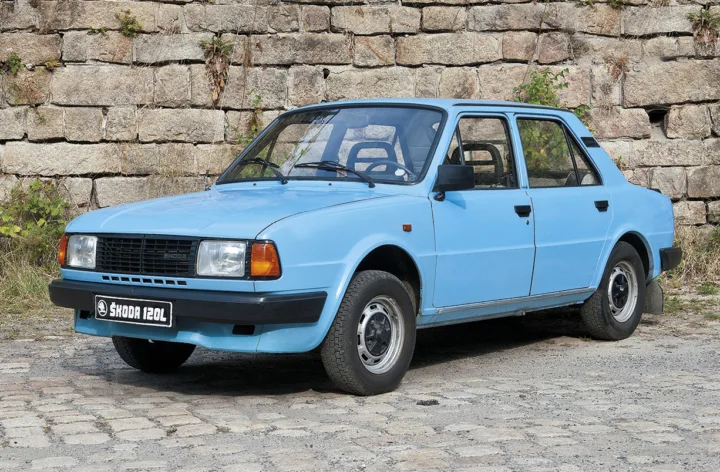Škoda 105/120/130 M series: the legend, true to the rear engine
By the mid-1980s, Škoda was perhaps the only manufacturer in the world that continued to make rear-engined family cars. This archaic concept was adopted by the Czech company in the early 1960s, when it was still relatively relevant, but very soon after it quickly sank into history, giving way to the avant-garde front-wheel drive and two-volume bodies. Due to its limited financial resources, however, the state-owned Škoda enterprise could hardly afford to regularly update the company's range to keep up with the Western European avant-garde. The only thing it could offer was partial modernization of its well-known models. This was exactly what happened at the end of 1983, when the complete facelift of the Škoda 105/120, classified with the internal factory designation M, was presented kit ambreiaj sachs pret.

In appearance, the cars of the modernized series are distinguished by a completely new, more aerodynamic front end with new fenders, a spoiler, large direction indicators grouped with halogen headlights and a two-piece polypropylene bumper. The combined rear light units are also now much larger and more modernly shaped.
The biggest news related to the debut of the M series is the enrichment of the range with two completely new models with 1300 cc engines. These are the 5-seater 4-door sedan Škoda 130 L and the 2-door sports coupe Škoda Rapid 130 with 2 + 2 seats.
One of the few external differences on the 130 L model is the presence of additional openings in the front spoiler, but the most significant changes are hidden under the bodywork, specifically in the engine, gearbox and rear suspension.
The use of a more powerful engine with an increased displacement necessitated a number of design changes to the standard unit, while retaining its basic concept. It was also a 4-cylinder, in-line, water-cooled, overhead valve (OHV) engine, located longitudinally behind the rear drive axle. While maintaining the piston stroke of 72 mm, which was the same for all engines in the Škoda range at that time, the cylinder diameter was increased to 75.5 mm, which increased the displacement to 1289 cc. cm. The compression ratio was increased to 9.7:1, and the maximum power now reached 43 kWh (58.5 hp) at 5000 rpm.
The new cylinder block has increased rigidity in the area of the crankshaft main bearings. The transmission is integrated into a common block with the engine.
This Škoda model is the first to feature a 5-speed gearbox in series production to reduce fuel consumption. The top speed is 153 km/h and acceleration from 0 to 100 km/h takes 15 seconds.
The Škoda range for 1985 offered a wide choice of 10 modifications in total, differing in engine, transmission, bodywork and interior. With this second and final modernization of the first model, introduced in 1976, the rear engines were put to an end. At the same time, work was already underway on the completely new company model Favorit with front-wheel drive and a two-volume body designed by Bertone.
- 2025-12-25 - BMW 120d: a pleasant diesel in the compact class (TEST)
- 2025-12-24 - ADAC: Dacia is the champion in terms of costs
- 2025-12-23 - A video game car becomes reality
- 2025-12-22 - VW T1: the small van with a big heart that failed to conquer Bulgaria
- 2025-12-20 - Your worry-free access to Mercedes-Benz Trucks digital services
- 2025-12-19 - Mercedes A-Class before TÜV: solid basic Benz
- 2025-12-18 - BMW Z4: a truly race-bred roadster (retrospection)
- 2025-12-17 - Long live the king? (a return to the world of F1 two decades ago)
- 2025-12-16 - Mercedes R-Class: the road Airbus
- 2025-12-15 - The new Smart is almost 5 meters long!












